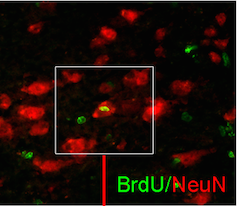A common cause of bone loss is an overactive parathyroid gland, which doctors usually treat with surgery. New research on how excess parathyroid hormone affects immune cells suggests that doctors could repurpose existing drugs to treat hyperparathyroidism without surgery.
The results were published October 8 in Cell Metabolism. [My apologies for not posting this in October.]
“Surgery is sometimes not an appropriate remedy for hyperparathyroidism because of the condition of the patient, and it is also expensive,” says lead author Roberto Pacifici, MD. “Also, the one pharmacological treatment that is available, cinacalcet, is not always the ideal solution. This work could potentially lead to alternatives.”

Roberto Pacifici, MD
Researchers at Emory University School of Medicine led by Pacifici teamed up with doctors from the University of Turin in Italy, combining observations of human patients with an overactive parathyroid with experiments on mice.
The drugs identified as potential treatments are: calcium channel blockers, now used to treat high blood pressure, and antibodies that block the inflammatory molecule IL-17A, under development for the skin disease psoriasis. Clinical trials would be necessary to show that these drugs are effective against parathyroid hormone-induced bone loss in humans. Read more





